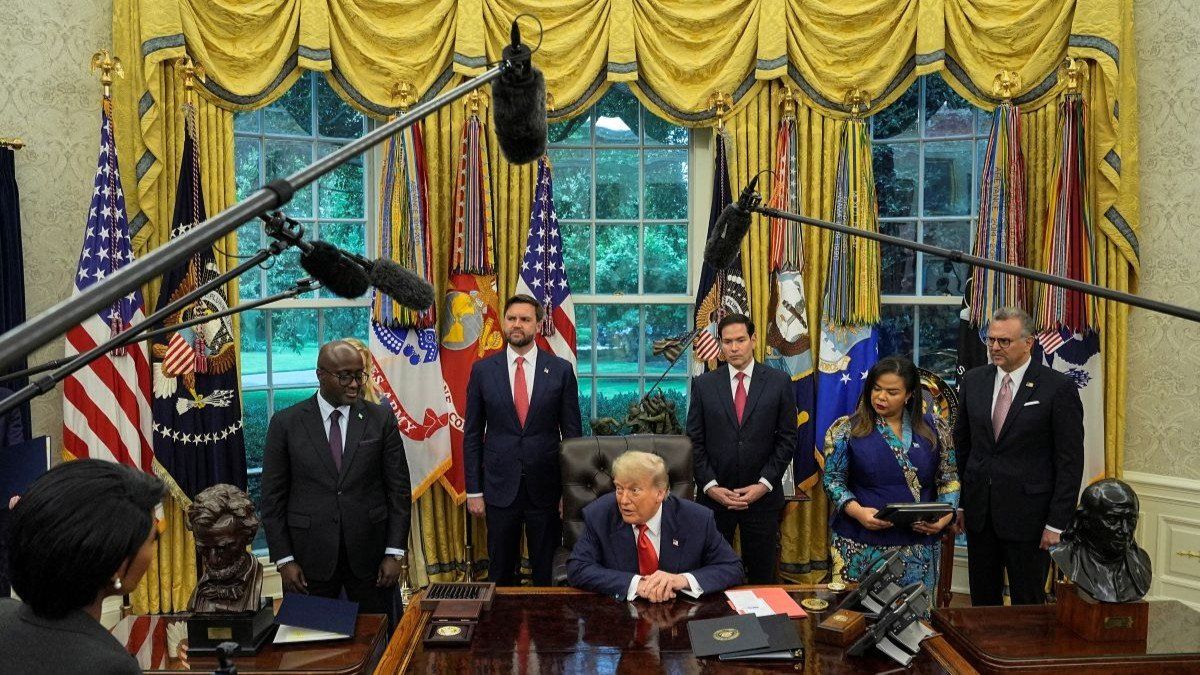On June 27, the Democratic Republic of Congo and Rwanda signed a US-mediated peace accord in Washington, D.C., to end decades of violence in the DRC’s resource-rich Great Lakes region. The agreement commits both nations to cease hostilities, withdraw troops, and to end support for armed groups operating in eastern Congowithin 90 days.
But the deal also includes a critical minerals partnership with the United States, granting it privileged access to the region’s vast cobalt, lithium, tantalum, andcoltan reserves. These essential components of electric vehicles, semiconductors, and defense applications have come increasinglyunder Chinese control due to Beijing’s backing of Rwandan mining and refining operations, something Washington wants to change.
So is this deal about ending conflict – or countering China? Will it hold? And do peace pacts now always come with a price?
A conflict rooted in ethnic strife and resource competition
Tensions between the DRC and Rwanda date back to the 1994 Rwandan genocide, in which the country’s Hutu majority killed as many as 800,000 people in the Tutsi minority. Many of the Hutu militias responsible for those crimes then fled to eastern Congo, sparking regional wars that killed millions more.
In the past year, the M23 militia, a Tutsi-linked group reportedlybacked by Rwanda’s current Tutsi-led government, seized key mining territoryin the DRC’s North Kivu province,displacing over 450,000 people. The United Nations and human rights groups say Rwanda is using M23 to plunder Congolese minerals, a charge the Rwandan government denies. The conflict has killed thousands and displaced as many as 2 million people.
What’s in the peace deal – and what isn’t
The agreement includes a framework titled “Critical Minerals for Security and Peace,” which allows US companies to invest in Congolese mining and processing under joint governance with Rwanda. The region’s mineral wealthis estimated at $24 trillion.
Human rights watchdogs warn, however, that the deal lacks enforcement and oversight. It also doesn’t include provisions for accountability over war crimes,sexual violence, or illegal mining.
Will the deal last?
There are roadblocks ahead. The M23 group itself was not party to the agreement, and has rejected its terms. And neither Congolese President Félix Tshisekedi nor Rwandan President Paul Kagamewere present at the signing ceremony, sending their foreign ministers instead; the two leaders will reportedly meet later with US President Donald Trump. Qatar, whichhosted talks between the DRC and M23 in early June, did attend the signing ceremony and has pledged to continue diplomatic efforts in the region.
According to Tresor Kibangula, a political analyst at Congo's Ebuteli research institute,the deal imparts "a strategic message: securing the east also means securing investments.” But in a conflict with such deep roots, he questions whether the “economic logic” alone will suffice to bring a lasting peace.
